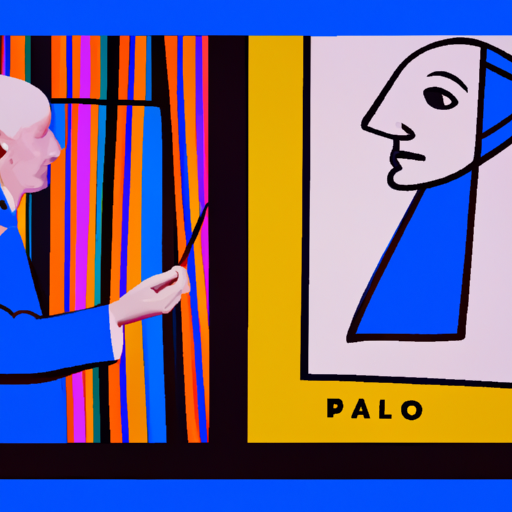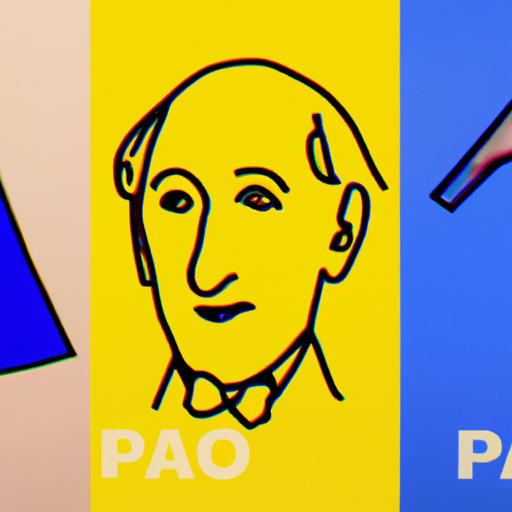
-
Table of Contents
- The Graphic Design Legacy of Pablo Picasso
- 1. Breaking Boundaries: Picasso’s Cubist Revolution
- 2. The Power of Simplicity: Picasso’s Minimalist Aesthetic
- 3. Experimentation with Typography: Picasso’s Lettering Innovations
- 4. Color as Expression: Picasso’s Vibrant Palette
- 5. Embracing the Unexpected: Picasso’s Collage Techniques
- Summary
The Graphic Design Legacy of Pablo Picasso

Pablo Picasso, one of the most influential artists of the 20th century, is primarily known for his groundbreaking contributions to painting and sculpture. However, his impact on the world of graphic design should not be overlooked. Picasso’s innovative approach to form, color, and composition revolutionized the field and continues to inspire designers to this day. In this article, we will explore the graphic design legacy of Pablo Picasso, examining his key principles and their application in contemporary design.
1. Breaking Boundaries: Picasso’s Cubist Revolution
Picasso’s most significant contribution to graphic design lies in his role as one of the founders of Cubism. Cubism, an art movement that emerged in the early 20th century, shattered traditional notions of perspective and representation. Instead of depicting objects from a single viewpoint, Cubist artists presented multiple perspectives simultaneously, breaking down forms into geometric shapes and fragments.
This radical approach to representation had a profound impact on graphic design. Picasso’s Cubist works, such as “Les Demoiselles d’Avignon” and “Guernica,” challenged the conventions of visual communication, encouraging designers to experiment with new ways of representing objects and ideas. The fragmented forms and dynamic compositions of Cubism continue to inspire contemporary graphic designers, who use similar techniques to create visually striking and thought-provoking designs.
2. The Power of Simplicity: Picasso’s Minimalist Aesthetic
While Picasso is often associated with the complexity of Cubism, he also embraced simplicity in his graphic design work. His ability to distill complex subjects into simple, iconic forms is evident in his posters, book illustrations, and typography.
One notable example is Picasso’s poster design for the peace movement during the Spanish Civil War. The poster features a simple dove, a universal symbol of peace, rendered in bold black lines against a white background. This minimalist approach effectively communicates the message of peace and has become an enduring symbol of the anti-war movement.
Contemporary graphic designers continue to draw inspiration from Picasso’s minimalist aesthetic. By stripping away unnecessary details and focusing on essential elements, designers can create visually impactful and easily recognizable designs. Picasso’s approach reminds us of the power of simplicity in graphic design.
3. Experimentation with Typography: Picasso’s Lettering Innovations
In addition to his contributions to form and composition, Picasso also experimented with typography, pushing the boundaries of traditional letterforms. His playful and expressive approach to lettering can be seen in his book illustrations and posters.
One notable example is Picasso’s collaboration with the French poet André Breton on the book “Le Surréalisme et la Peinture.” Picasso’s hand-drawn lettering, with its exaggerated curves and unconventional shapes, perfectly complements the surrealistic nature of the text. His innovative use of typography adds an extra layer of meaning to the book, blurring the boundaries between image and text.
Contemporary graphic designers continue to explore and experiment with typography, taking inspiration from Picasso’s bold and unconventional letterforms. By pushing the boundaries of traditional typography, designers can create unique and visually engaging designs that capture the essence of a message.
4. Color as Expression: Picasso’s Vibrant Palette
Color played a crucial role in Picasso’s work, and his bold and vibrant palette continues to inspire graphic designers today. Picasso’s use of color was not limited to realistic representation but was instead used to convey emotion and expression.
One example of Picasso’s masterful use of color is his painting “Les Saltimbanques.” The vibrant hues and contrasting tones create a sense of energy and movement, enhancing the emotional impact of the artwork. This approach to color has influenced generations of graphic designers, who use color to evoke specific moods and create visual impact in their designs.
Contemporary designers often draw inspiration from Picasso’s color palette, experimenting with bold and unexpected combinations to create visually striking designs. Picasso’s use of color reminds us of the power of color as a tool for communication and expression in graphic design.
5. Embracing the Unexpected: Picasso’s Collage Techniques
Another aspect of Picasso’s graphic design legacy is his innovative use of collage. Picasso’s collages, made by combining different materials and textures, challenged traditional notions of art and design.
One of Picasso’s most famous collages is “Still Life with Chair Caning,” where he incorporated a piece of oilcloth with a printed pattern into the artwork. This unconventional approach to materials and textures opened up new possibilities for graphic designers, who began to experiment with collage techniques in their own work.
Contemporary graphic designers continue to embrace the unexpected by incorporating collage techniques into their designs. By combining different elements and textures, designers can create visually rich and dynamic compositions that capture the viewer’s attention.
Summary
Pablo Picasso’s graphic design legacy is a testament to his innovative spirit and willingness to break boundaries. His contributions to form, color, composition, typography, and collage continue to inspire and influence contemporary graphic designers. Picasso’s Cubist revolution shattered traditional notions of representation, encouraging designers to experiment with new ways of visual communication. His minimalist aesthetic reminds us of the power of simplicity in design. Picasso’s playful and expressive approach to typography pushes the boundaries of traditional letterforms. His vibrant color palette demonstrates the emotional impact of color in design. Finally, his innovative use of collage techniques encourages designers to embrace the unexpected. By studying Picasso’s graphic design legacy, designers can gain valuable insights and inspiration to create visually striking and impactful designs.
